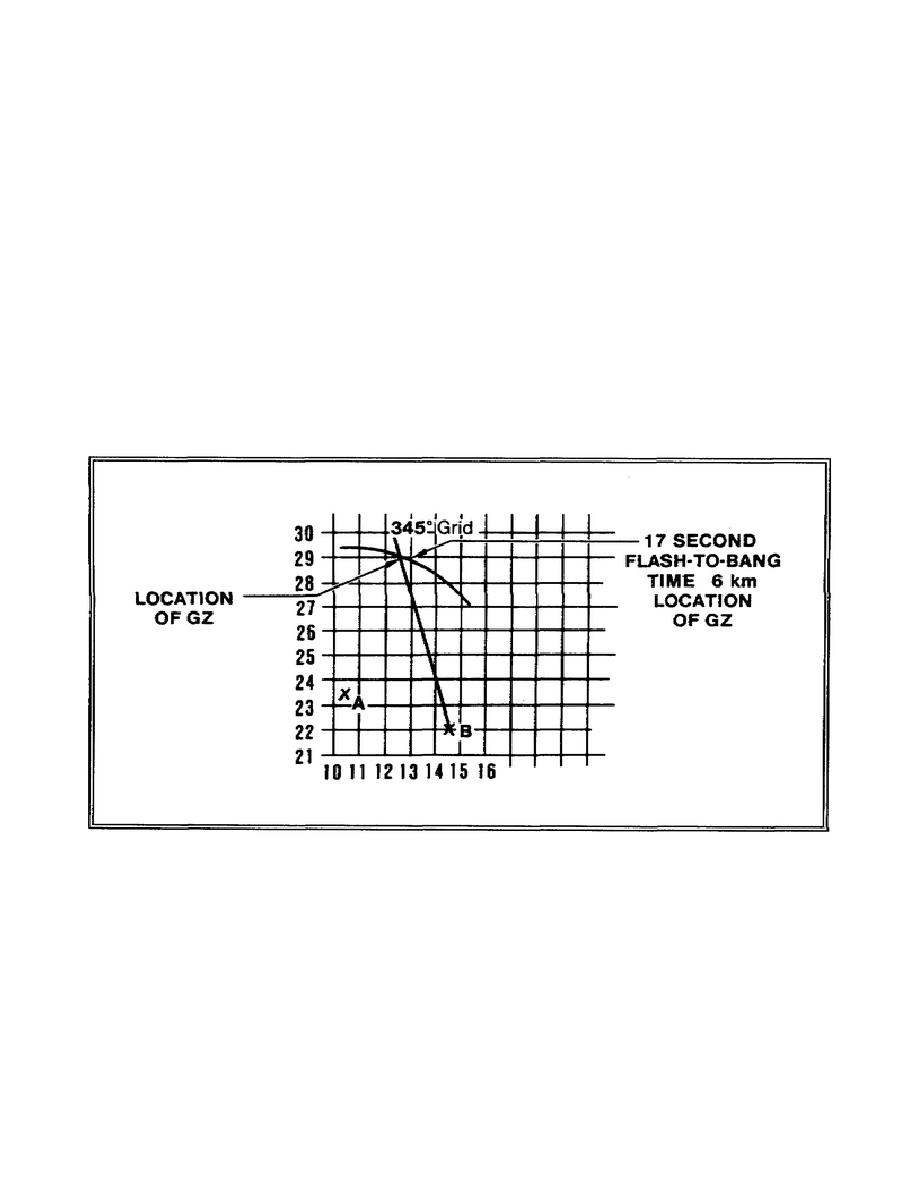
e. Two or More Observers Reporting an Azimuth and a Flash-to-Bang
Time.
When Observer A reports a flash-to-bang time and Observer B reports an
azimuth to the nuclear cloud, GZ can be located by first plotting both
observers' locations on the map. You then plot the azimuth from Observer
B's location on the map. Then using the nomogram (Figure A-2 on page 3,
Supplemental Booklet), determine the distance to GZ based on the flash-
to-bang time reported by Observer A. Using a drawing compass (or a piece
of string with a pencil tied to one end), draw an arc using the distance
to GZ as the radius, from Observer A's location on to the map. GZ is
considered to be the point where the arc from Observer A intersects the
azimuth line of Observer B (Figure 1-5).
There will be times when
Observer A's arc will intersect the azimuth line of Observer B at two
points.
In this case, Observer A must be able to give a general
direction of the burst in order to determine which of the two points is
used. If Observer A is unable to do this, other sources must be used to
determine the location of GZ.
Figure 1-5. Intersection of an Azimuth
and Flash-to-Bang Time Arc
CM2307
1-8


 Previous Page
Previous Page
